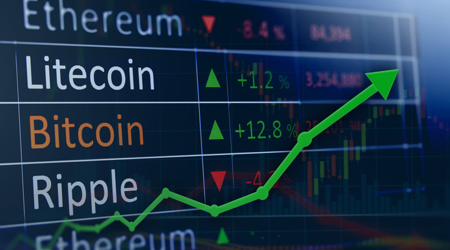How to Properly Trade During the Crypto Market Recovery
In case you were wondering, we are in period of recovery. The assumption is we will somehow regain valuations previously reached, the question is a matter of time frame and how best to load up to get there. To some, this will be obvious. If not, perhaps it can help you make better decisions.
I advocate choosing coins and doing research to understand what they are, SWOT, how they trade, sentiment, etc. Also to have a smallish number or core holdings (5-15). BTC is a category by itself since most coins trade against the BTC pair. At any given time, it makes sense to have between 25-50% of your holdings in BTC (w/exceptions). As the mother-coin, ultimately the long term goal is a portfolio metric based on BTC and USD value.
Always have some % in cash to take advantage of dips. I usually try and keep 15% but it fluctuates depending on where we are in the cycle. In Dec, I planned to move to 50% cash, but instead went deep on SC for the expected pumps that occurred in early Jan.
Recovery presents interesting opportunities but a key idea should be to increase your notional BTC holdings. In other words, when you buy alt-coins, you are expecting their value to appreciate in terms of BTC, and with BTC appreciation, USD value follows.
The rest is Alts, usually between 40-60% of portfolio.
Alts do funny things, sometimes they trade down when BTC rises, other times vice versa. In recovery, Alts often trend in concert with BTC. The first key understanding then is you want to have a lot of your portfolio in Alts, when both are appreciating, because Alts give you a double bang. An Alt that remained flat would increase in USD if BTC is increasing. We're looking for both BTC and USD increase.
You might look for Alts that got crushed harder in the down, but I tend to focus on fundamentals and just trade my core list. You can play hot coins getting a lot of run, etc. Doesn't matter as long as the coin is moving with BTC. Decred/Vertcoin are examples where correlation is not always as strong, hence I avoid these in recovery.
Set stops so that you don't get caught holding bags on coins that dip harder. I try and use a risk/reward strategy where no trade risks more than 1-2% of my total bankroll and set stops and individual position sizes appropriately. Stops will trade back into BTC, which will also probably be dipping and you can re-evaluate and find new Alts/positions when it moves north again.
The issue with this strategy is that it suggests you go 100% Alts during a recovery and that might actually make sense. But, if you like to hold some BTC and get additional bang for your buck, you can move to one of the marginable exchanges (Bitmex, Bitfinex, SimplexFx, etc) and buy futures or derivatives at low leverage (2x-5x) in order to take advantage of the long bull we all know is coming. You go low leverage because there will be dips and you don't want to get liquidated.

I think the key understanding is to get that you are using alts in the recovery to increase BTC (or eth) and that you should be overweighted alts because they give you double bang
During downswings the opposite applies and you should overweight the parent coin.
During sideways markets you need to be a stockpicker and find coins that are undervalued and have a balanced portfolio weighting
With Risk/Reward, it's important to note that the total trade value can be more than 1-2%, it's just the amount you are willing to lose on the trade cannot go above 1-2%. Risk/Reward is the entire game, you can't control direction, you can't control swings, but you can control how much you are willing to lose.
<h3This was a guest post by fellow trader FaustianAGI in the Sia Discord chat.</h3